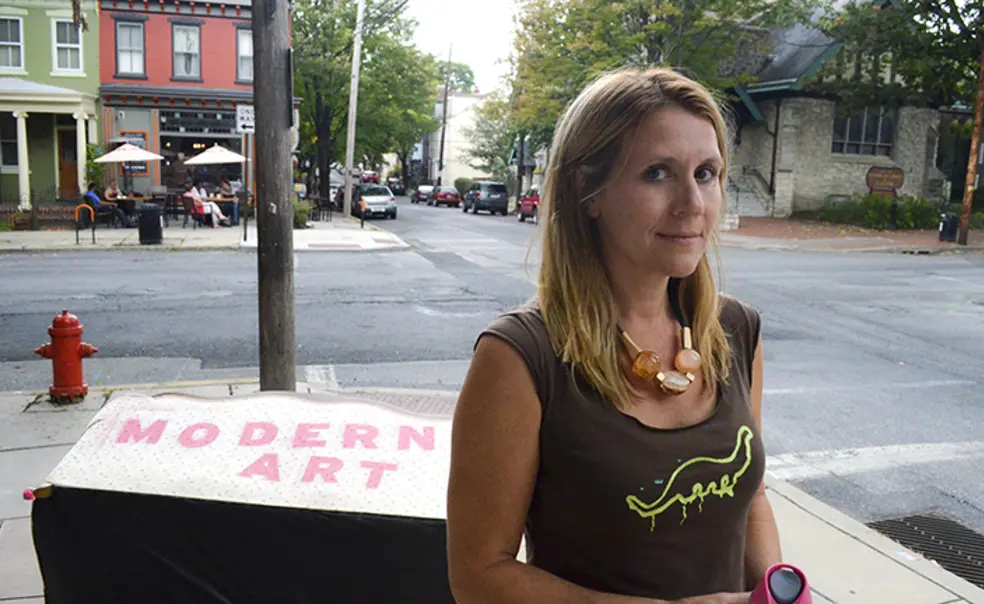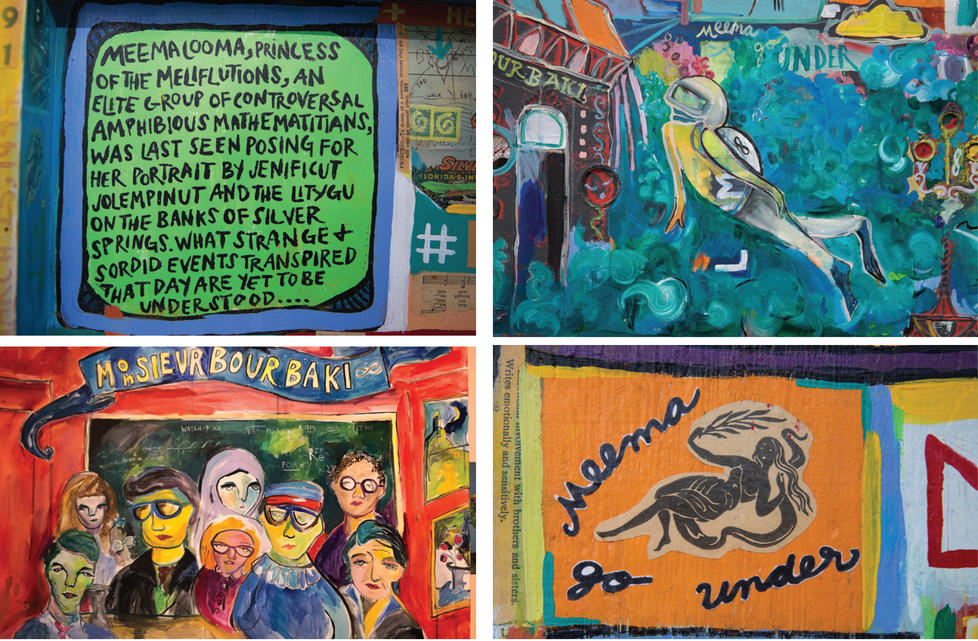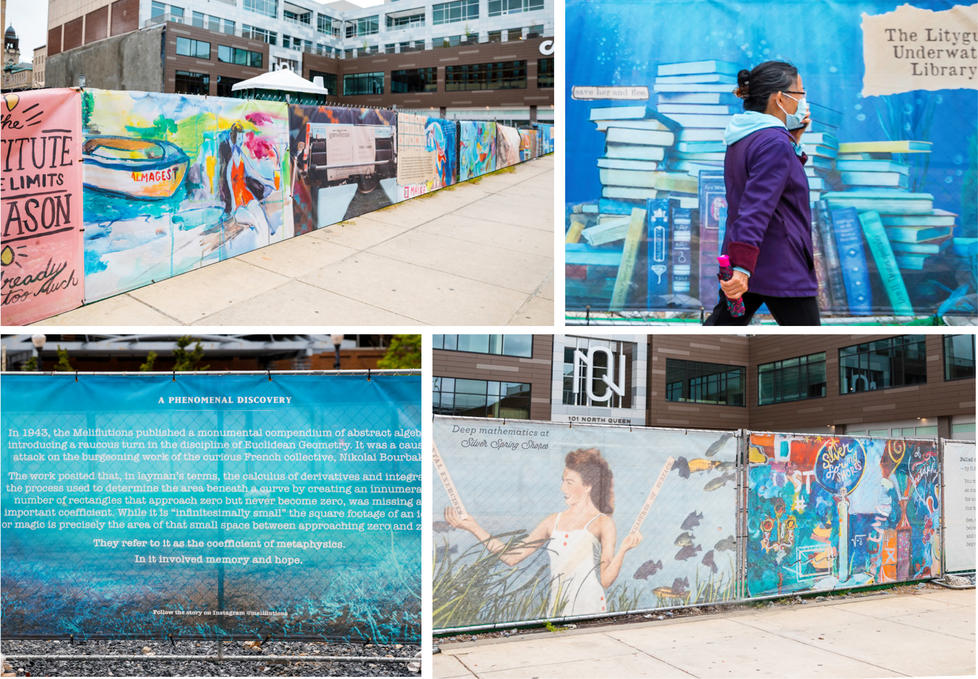Libby Modern ’95 Is Moving Public Policy With Art
‘I’m interested in how these projects become little experiments,’ Modern says
Libby Modern ’95 wanted to know what it would take for her neighbors to give up their cell phones for the weekend. In 2017, she hauled an old library card catalog into her Lancaster, Pennsylvania, art studio and painted it mint green. Each drawer — or tiny phone hotel room — was labeled with a number corresponding to a pink hotel keychain hanging on the wall. Nearby sat booklets, with advice for surviving the weekend off the grid, and buttons stamped “please be patient” for her neighbors to wear while looking lost without Google Maps. She called the project “Phonotel.”
Some people were eager to give up their phones. Others, she says, “would have this laundry list of reasons why they couldn’t.” But eventually, most gave in. They were surprised by the experience. “It was kind of addressing the issue of how we’re increasingly on our screens and can’t really exist without them,” Modern says. “How do we get people to understand that? How do we get them to realize they’re just following these rules?”
Modern’s answer to such questions is almost always art. The Princeton history grad worked for a graphic design firm in San Francisco before opening her own design studio catering to environmental and social justice companies. She started doing the community engagement work that now defines the installations born in her Lancaster studio, which she named Modern Art.
“I’m interested in how these projects become little experiments,” she says, “then (there) will be a direct through line to specific policy.”
Her latest project, planned for the fall, involves reimagining the town hall meeting. Is the local government hearing its residents? Are the residents paying attention to officials? Modern formed a band of local artists and other creative types to attend city council meetings and translate them into paintings and performances for the community. It’s an experiment in “experiencing a meeting, rather than just sitting there,” she said. “That starts a conversation that then figures out how we’re going to think about moving those meetings to some other form that’s more productive.”
Modern was also behind an interactive installation for the local public library, titled “Don’t Forget How to Read.” Visitors were encouraged to bring a book to Modern’s curated reading nook positioned in the gallery storefront. In a silent, subtle way, her project communicated the library’s simple message: to put the joy of reading on display. Soon after, a string of stores across Lancaster jumped in, offering to swap their mannequin displays for an armchair and reading lamp.
By this fall, Modern plans to unveil her latest solo project, a collection of paintings and videos depicting the fictional story of amphibious mathematicians who find a way to breathe underwater. Earlier this year, the city construction committee asked if Modern could design 35 vinyl banners to cover the fences of a construction site in the center of Lancaster; they wanted to cover the eyesore with art. Modern returned to the committee with prints of the upcoming installation. Each panel, she said, depicts a vignette from the story along with clues to help solve the mystery of one character’s disappearance.
“You can walk by and get bits of the story,” she said. “People find it very confusing, but just the right amount of confusing. Confusion that leads to curiosity.” She hopes that will bring them back for more.
Below are images, courtesy of Modern, from “Let Us Suppose These Things Are Like the Truth: A Curious Account of the Meliflutions,” the construction fencing installation that tells the story of amphibious mathematicians.














No responses yet